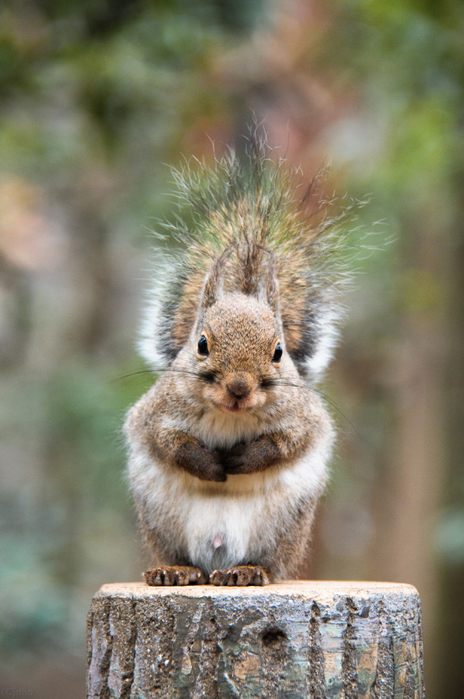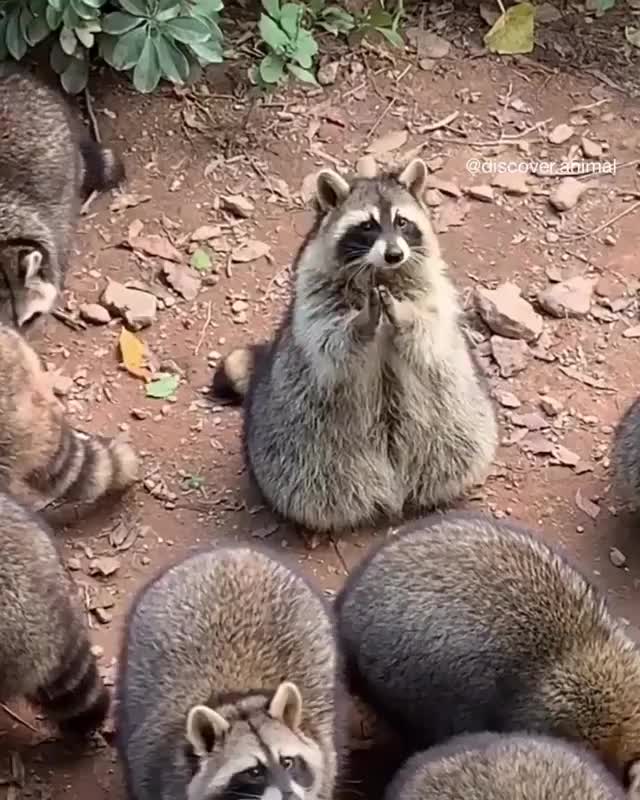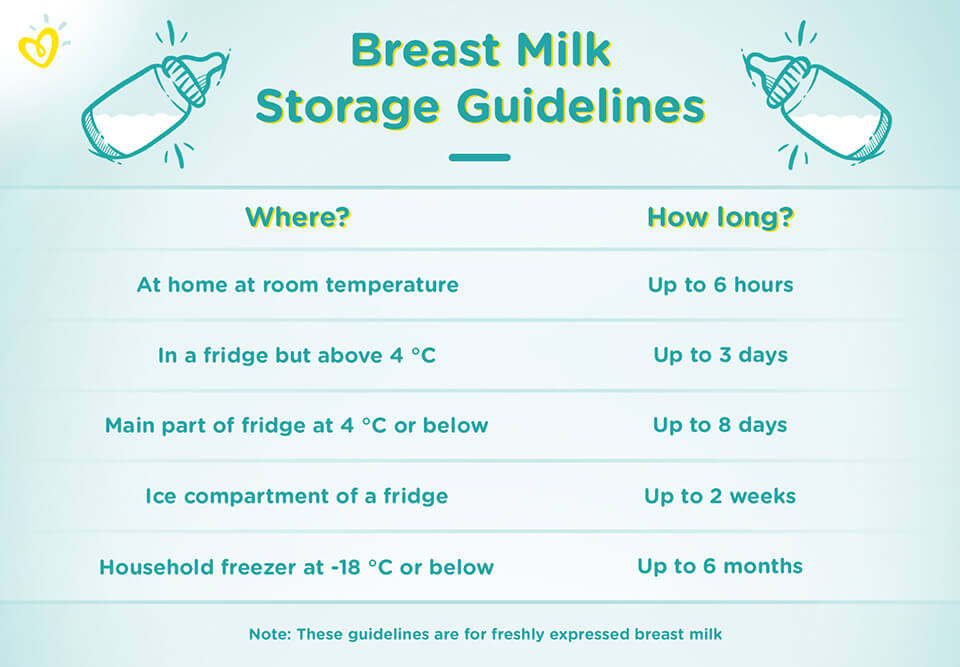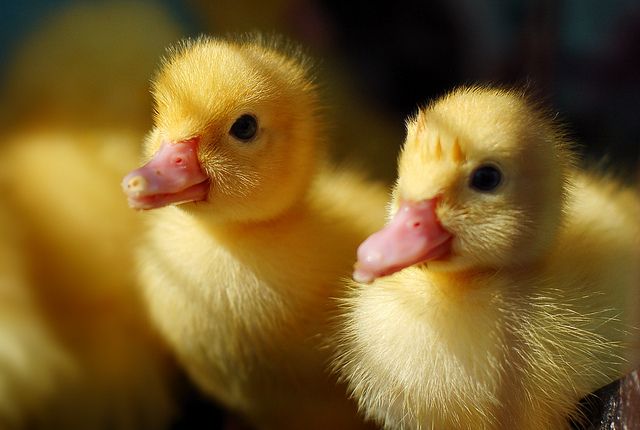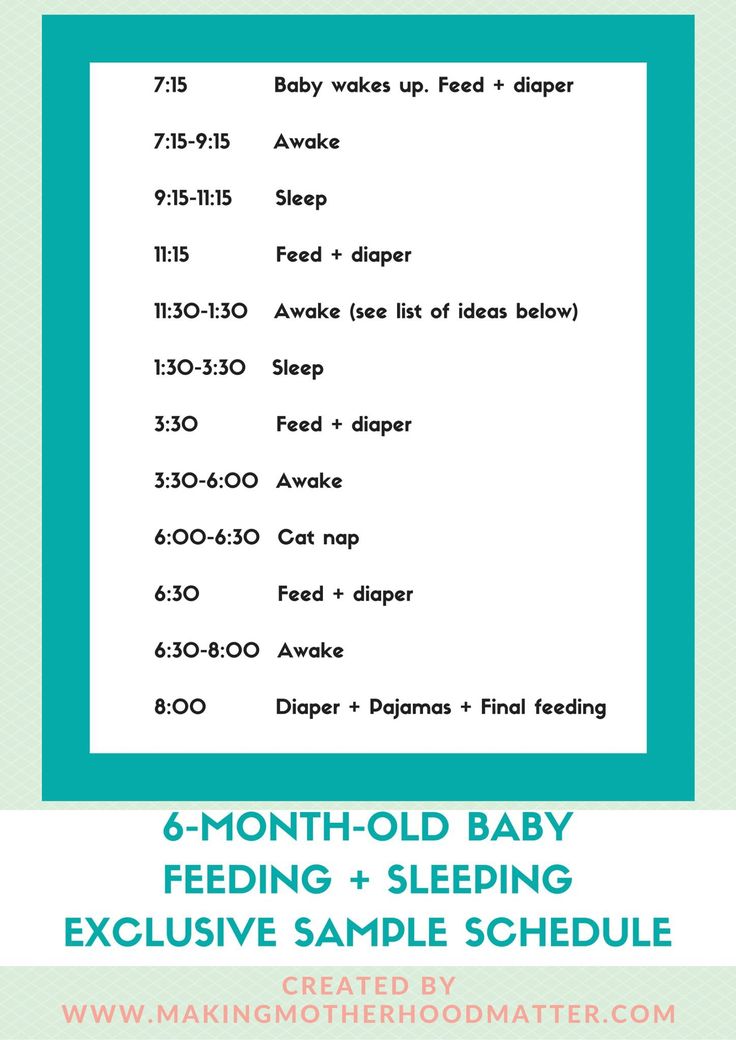What to feed orphaned baby robins
What Do Baby Robins Eat? and How to Feed One! a How-To Guide
Either you found a baby robin that’s fallen from its nest, or perhaps you’re just curious and asking what do baby robins eat?
Well, here’s the guide on what baby robins eat, and if the need arises then how to feed one. So first let’s give you the quick answers, then we’ll get into more details…
How do baby robins eat? During the first week, the parents regurgitate partly digested food into the baby’s mouth. As they grow they eat a variety of food from earthworms, to whole worms and large insects, and even berries until they fledge to finally fend for themselves.
How do you feed a baby Robin? To feed a baby robin you can use a dropper, clean hands, or let the babies feed themselves when they become independent enough. Once released they will naturally be able to hunt for food and feed themselves.
Ranger Planet
Please enable JavaScript
Ranger Planet
Read on, or watch the video below from the Ranger Planet Youtube Channel.
What do baby robins eat and when
Baby robins are just that – babies, at first, and depend wholly on their parents for food.
However, what baby robins eat during the very first few days and onward changes as time goes by – and fairly quickly too.
Here’s the list of what baby robins eat at each growth stage. But if you’re looking to protect your baby robin, then be sure to check what eats robins to know what might want to prey on them. You might also be interested to know if it’s legal to keep a robin as a pet?
1 – 7 Days – baby robins eat…
When baby robins are with their parents, the parent robins forage for food for themselves, but also gather enough to feed their young.
The parent regurgitates this partly digested food into the baby’s mouth. This is the only way that baby robins eat and are fed during the first week from birth.
This includes partly digested insects, beetles, worms, berries, and seeds
7-14 days – baby robins eat…
Around this time, the parents pass larger portions of food or break up larger ones such as earthworms and deliver into the baby robin’s mouth.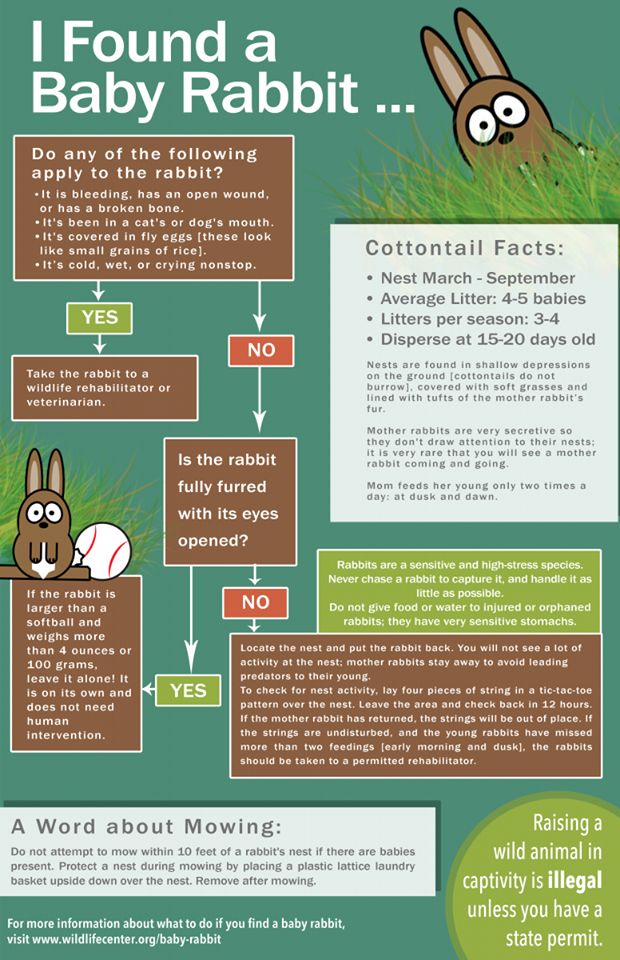
From here onwards the baby robins start eating more with each passing day.
Whole versions of insects, beetles, worms, berries and seeds.
After a period of this, the parents begin to let the baby robins eat the whole worm and other large insects on their own.
By this time a baby robin will be able to eat the equivalent of 14 feet of earthworms during its two-week nest life.
14 days plus – baby robins eat…
From this point, more often than not baby robins are able to eat food provided to them by the parents that are just placed in the nest. The baby robin is old enough to find and eat the food themselves within the nest.
In general, baby robins depend on the parents fully for their daily dose of food, until they are independent enough and can fledge the nest and fly away.
On average, the parent robins can make up to 100 visits a day to feed their young ones – that just shows how often the baby robins eat to grow up.
This is also why robins are very picky in choosing a territory to create their nest. They need to ensure they live close to adequate food sources to make the hunt for food and feeding visits often and easy.chicks in a nest
They need to ensure they live close to adequate food sources to make the hunt for food and feeding visits often and easy.chicks in a nest
You might also like:
Do robins make good pets
Why do robins hop
Do birds have ears
Do birds have teeth
So let’s move on to how you would feed a baby robin.
How to feed a baby robin?
If you’re in the situation where you have a baby robin you need to take care of and hand rear, perhaps one that fell from the nest or lost its parents. Then naturally, there are plenty of things you will have to know about feeding baby robins – let us give you some guidance.
There are, thankfully, many ways and methods that have worked to feed baby robins, below are three safe methods to feed a baby robin.
1. Using a syringe to feed a baby robin
You can use a syringe, like this one, or an eyedropper to feed baby robins. For this method, the best food would be to get a baby bird formula mix.
For this method, the best food would be to get a baby bird formula mix.
With this formula, use the syringe and simply follow the instructions for feeding.
Alternatives to baby bird formula
Instead of a bird formula mix, you could even use baby formula or wheat cereal like farina. Or at a push, you might be able to soak dried dog food which has been known to feed baby robins quite well.
However, when feeding these products be sure to still use the syringe or dropper. Try to make sure the products are mushed down enough to pass through the dropper without getting blocked.
At first, one or two full droppers will almost certainly fill the baby robin, but as they grow they’ll likely need more of it – and potentially more often. Being a robin parent is a demanding job!
The baby robin will let you know when it’s full, usually when it’s hungry or wants more food it opens its mouth automatically.
Be aware of this too, do not try to feed the robin when it is not asking, as you can easily overfeed them, which is just as risky as not feeding them.
So it’s important to observe if the bird is full or not before trying to encourage them to eat further.
2. Using your hands to feed a baby robin
Hands can also be used to feed baby robins. Moistened duck or chicken feed that are processed well with an even texture can also make some good reasonable food baby robin food.
When using the hands it’s important to be hygienic. Not only when feeding but also while making the food using the hands or when handling the bird.
To feed a baby robin using your hands, take a tiny pinch of food and stick it to the tip of the finger and all you have to do is touch the corner of the bird’s mouth.
The baby robins will automatically open their mouth and you shouldn’t have any trouble passing it into their beaks.
Another great thing about using hands to feed baby robins is that you will get a good sense of when to stop because the baby robin will stop opening their mouth when they feel full, unlike droppers which can be inserted into the mouth anyway – even if the bird is already full.
3. Allow the baby robin to feed on its own
If you get to this point then congratulations, or if the bird already has some plumage and appears to be an older chick.
This method works mostly when the baby robin is a little more grown-up and can handle the food on their own.
This is a method that allows the baby robins to feed themselves by placing the food on the ground next to them.
For this, offering small berries, or using mealworms, earthworms, or grubs near the ground next to where they rest will work fine.
This will also allow the birds to come and feed whenever they feel hungry. On average baby, robins may have to be fed every 5-10 minutes at peak times.
When feeding baby robins, make sure that…
- The food is at room temperature. Even if the food is refrigerated, it’s important to make sure the food is at room temperature when feeding the baby robins.
- Make sure the food is not spoilt, has no fungus or bacteria when feeding.

- The food should have a fine texture and even toward slushy, but smooth enough to get through the delicate throats of baby robins.
- Up to three weeks old, the baby robins will be grown up enough to find their food. So by this time, it’s good to allow the baby robins to eat of its own accord and just make sure food is available.
Then one day, they will fledge and fly away. And you can smile in the knowledge you probably just saved a wild bird’s life. If the baby robin does not survive, then it was never meant to be, and at least you provided it with some comfort and the best chance of survival.
So finally…
We hope this has been useful in answering the question – what do baby robins eat? And hope you’ve been able to put the help on how to feed one to good use.
Tweet
What Do Baby Robins Eat? How to Take Care of a Baby Robin
What’s This Post About?
Robins are pretty songbirds that belong to the Turdidae family.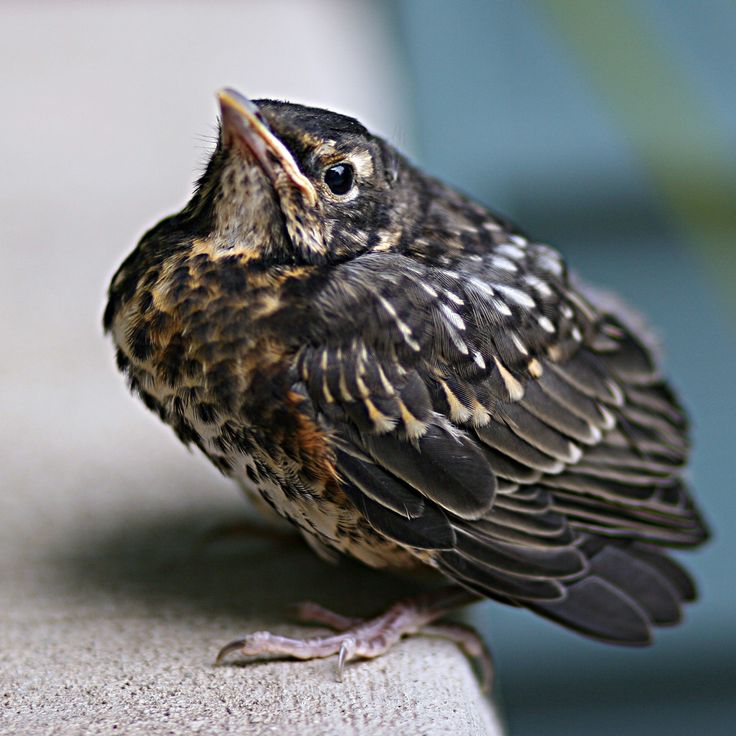 There are two types of species in this family: American Robin and European Robin. They can be differentiated by appearance, region, and plumage. Read on to find out more about them.
There are two types of species in this family: American Robin and European Robin. They can be differentiated by appearance, region, and plumage. Read on to find out more about them.
This post consists of an overview of what do baby robins eat. You can easily come across a baby by making sure there are robins in your backyard.
Attract these birds to your yard via bird feeders containing their favorite food sources. Robin babies can take up to one whole day to hatch properly from the eggshell.
Robin nestlings consume earthworms to survive. They prefer eating insects like mealworms, grubs, earthworms, crickets, grasshoppers, beetles, etc. Taking care of a baby robin is very challenging. You need to ensure that the bird is warm, fed, and safe.
What Are the Stages of Robin’s Life?
Growth and development of a robin in different life phases.
Like all animals, robins also go through different phases in their life. Developing from a baby to an adult is quite a long process.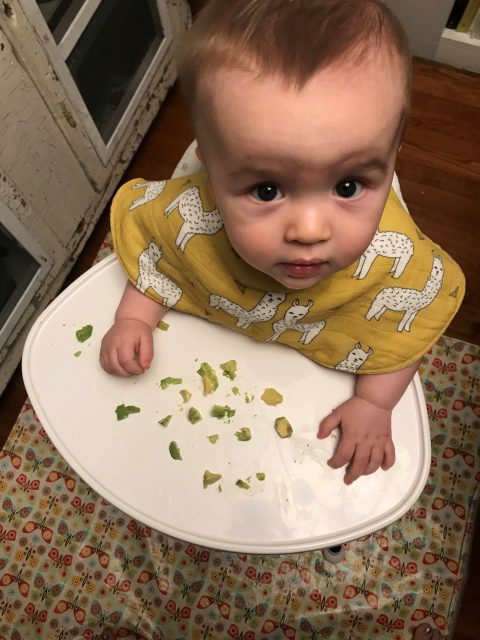 Each stage carries with it additional requirements with regards to dependency, food, behavior, etc.
Each stage carries with it additional requirements with regards to dependency, food, behavior, etc.
Robins do not mate for life; the pairs stick together throughout the breeding season then depart. The breeding season comprises of 2 – 3 nesting. The same two birds might probably mate again and stay together in the next year’s breeding period.
Watch this video to visually see how a baby robin transitions into an adult:
The Egg
These birds begin courting in late winters or early spring. Robin’s produces 5 – 6 clutches with one egg each day. The eggs take about 12 – 14 days to hatch, and tiny baby robins are born.
Robins lay blue eggs. The eggshell of the bird’s egg is of a cyan shade with a matte finish. The egg length is usually about 2.7— 3 cm, and it is 2.1 cm wide.
FUN FACT
Robins have up to three broods in a year, many of their babies do not survive.
1 to 7 Days
For the first few days, the babies can only open their beaks and not their eyes. They are delicate little bird babies with pink skin and light grey feathers patched on their bodies.
At this time, the baby robins are entirely dependent on their parents. The parents look for food and bring it back to the nest to feed their young. These babies survive on the partly digested food received from their parents directly in their mouths. This is the only way the babies can be fed during the initial days.
The food they eat includes partially digested worms, beetles, seeds, berries, and small insects.
INTERESTING FACT
Robins roost together in trees. Up to 200,000 robins can roost together at once.
7 to 14 Days
Once the hatchlings have transitioned into nestlings, they grow bigger, start developing feathers, and can open their eyes. They express their food needs through loud chirping; the mother robin feeds them food and cleans the nest.
They express their food needs through loud chirping; the mother robin feeds them food and cleans the nest.
During this phase, the parent bird starts feeding them large portions of food through their mouth. The young birds consume more and more with each passing day. This is the baby’s growing period which is why their demand for food has increased.
They eat the whole version of beetles, worms, seeds, insects, and berries. Soon the parents let the baby robins eat the entire insect or fruit on their own.
FUN FACT
As soon as a baby robin grows 14 days old, it can consume food equal to 14 feet of earthworms.
14 Days and Over
At this stage, the birds are getting bigger, fuller, and gaining strength. Parents now place the food in the nest, and the baby robins find it and feed on it themselves. However, the young birds do depend on their parents until they can fly off the nest.
Only when they enter the fledgling phase, they become independent.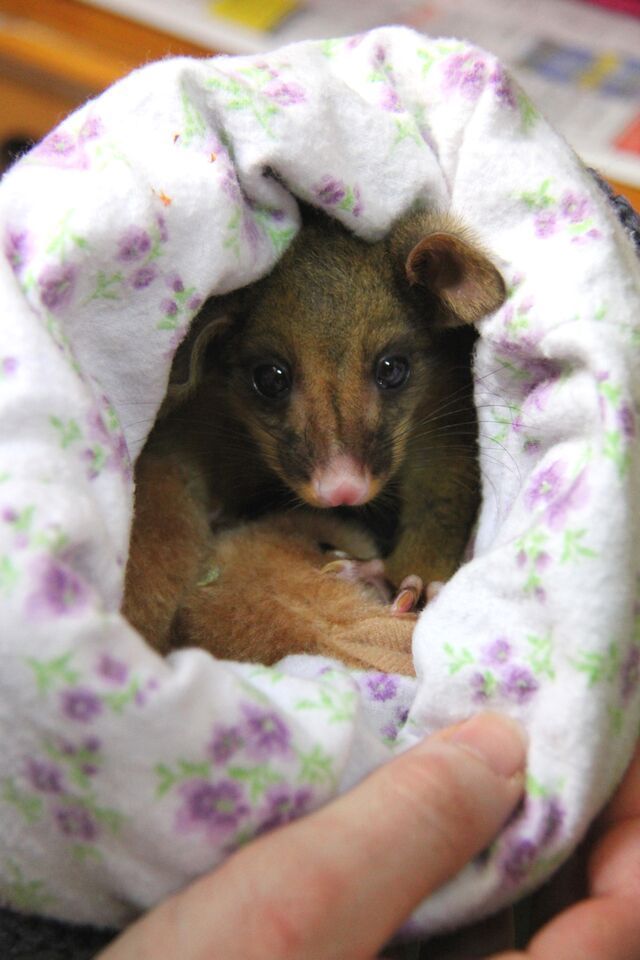
INTERESTING FACT
The parent robin has to make approx. 100 visits per day to feed their babies. This is because baby robins require a lot of feed to grow and develop. This is also why robins are careful when they pick a territory – they ensure that the place they live in has easy access to ample food sources.
What Can You Feed a Baby Robin?
Every bird has its preference; let’s explore what baby robins prefer to eat.
Robins are omnivorous birds and need a balanced diet to survive. Therefore, the best thing to feed a baby robin would be insects such as crickets, beetles, or grasshoppers, earthworms, mealworms, fruits, and berries.
The main aim of a balanced, nutrient-rich diet for a robin is to help it grow into a healthy adult. On average, a baby robin has to be fed after every 5 to 10 minutes. Further, we will mention a list of food you can feed the babies with.
INTERESTING FACT
Jays and crows are a threat to baby robins.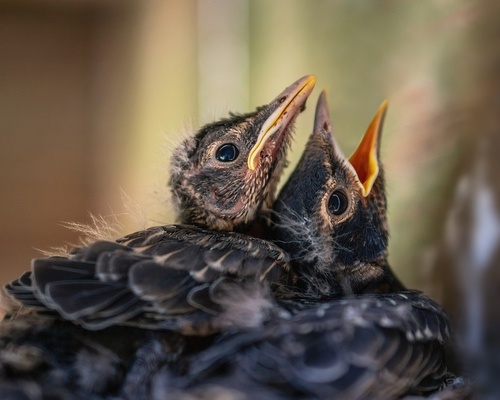 This is because they tend to eat these baby birds in the absence of their parents.
This is because they tend to eat these baby birds in the absence of their parents.
Earthworms
Baby robins love to indulge in earthworms or mealworms. They are fed worms by their parents as it proves to be a nutritious snack for the birds. However, feeding robins can be challenging, and the mother needs to be on her wings to find food for her babies.
If the baby bird is left alone for even a week, it will start looking weak or sick and may even die.
Insects
Insects are the best food option for baby robins. Adult robins feed mainly on beetles and grasshoppers. Nestlings are given partly digested beetles and grasshoppers from their parents.
If you plan on feeding a baby robin an insect on your own, then make sure it is old enough to eat by itself.
PRO-TIP
The best time to feed insects to baby robins is during the spring season. The baby is old enough to eat food independently and can easily digest insects like crickets and beetles by this time.
Fruits and Berries
Fruits and berries are also something that baby robins enjoy. They can eat fruits like grapes, blueberries, blackberries, and strawberries.
Make sure that the fruits are cut up into tiny pieces before being fed to the young birds. If the baby robin is strong enough, you can place these fruits on the ground and wait for them to feed on it.
INTERESTING FACT
Baby robins stay in the nest for a maximum of 16 days before practicing their first flight. After that, the mother robins protect their babies till the time they learn how to fly smoothly without any falls.
Do Baby Robins Need Liquids to Survive?
Food is a need, but is water also required for baby robins to survive?
Water is not essential for a baby robin. This is because the food they eat is moist, and it keeps them hydrated throughout the day. If the fledgling is not eating correctly, it is advisable to only put a drop of water on the bird’s beak.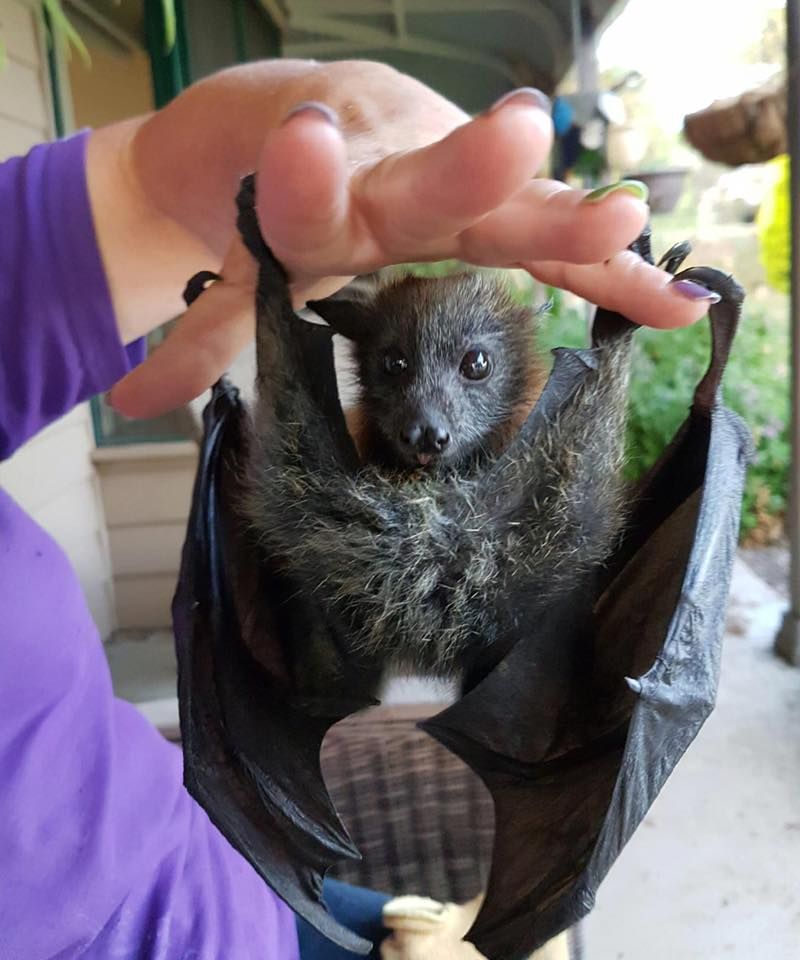
If you plan to provide water to these young birds, then make sure that the water is lukewarm and fresh. They do not have a high-water requirement but when needed, try to be very careful, feed tiny drops of water at a time.
Once the baby robin grows, it will be able to drink water independently through shallow dishes. Although the food provided by parent robins is enough to keep the baby hydrated, if you find an orphaned baby robin that does not eat right, make sure you use a dropper or syringe to put a few drops of water in its mouth timely.
Moreover, birds, unlike mammals, do not consume milk. The digestive systems of baby robins are not strong enough to tolerate milk. It is a misconception that it is alright to provide milk with bread to birds. However, milk can be highly toxic.
PRO-TIP
Never force water directly in the baby bird’s mouth; it may lead to the young bird choking and dying.
What Should Not Be Fed to Robins?
Specific food sources should be avoided entirely while feeding a robin. Let’s find out what they are!
Let’s find out what they are!
Robins can not eat anything large as they are little songbirds with a small beak. It is best not to feed these birds bread, avocadoes, asparagus, and many fruits and vegetables. Milk or alcohol should also be avoided as it may harm the bird’s internal system.
Try not to put out bird mixes for robins in your backyard. Most bird mix is viable for larger bird species to consume as they consist of beans, rice, dried peas, lentils, and wheat that a small robin might not be able to digest.
Ideally, bread should not be given to robins as it does not have the proper nutrients to keep the bird safe and warm during the winters. However, bread can be given at rare instances but only as a snack.
Please do not leave out milk for robins; they might not be able to digest it. However, fermented dairy products such as soft cheese can be given in tiny amounts.
Other items that should be avoided for a robin are:
- Vegetables: eggplant, asparagus, onions, olives, parsley, spinach, and mushrooms.
 These might be healthy for humans but are not something you can give to robins.
These might be healthy for humans but are not something you can give to robins. - Nuts and Seeds: pear seeds, apricot pits, apple seeds, cherry pits, plum pits, peach pits, and raw peanuts should all be avoided.
- Beans: dried beans consist of hemagglutinin that is dangerous for birds. However, cooked beans are perfectly fine to give.
- Fruits: rhubarb and avocados are not safe for birds like robins.
- Sugary food: chocolates are not advisable to feed a bird.
- Liquids: alcohol, coffee, tea, carbonated drinks, and milk.
The food items listed above should be kept away from the birds. These can make the birds fall sick or be fatal to the little birds.
PRO-TIP
To distinguish between a male and a female robin, examine the color of their heads. A male robin has a darker shaded head, while a female robin has a pale brownish-gray color.
How To Attract a Robin?
Tips and tricks to attract a robin to your yard!
Attracting a robin to your yard is very simple and easy.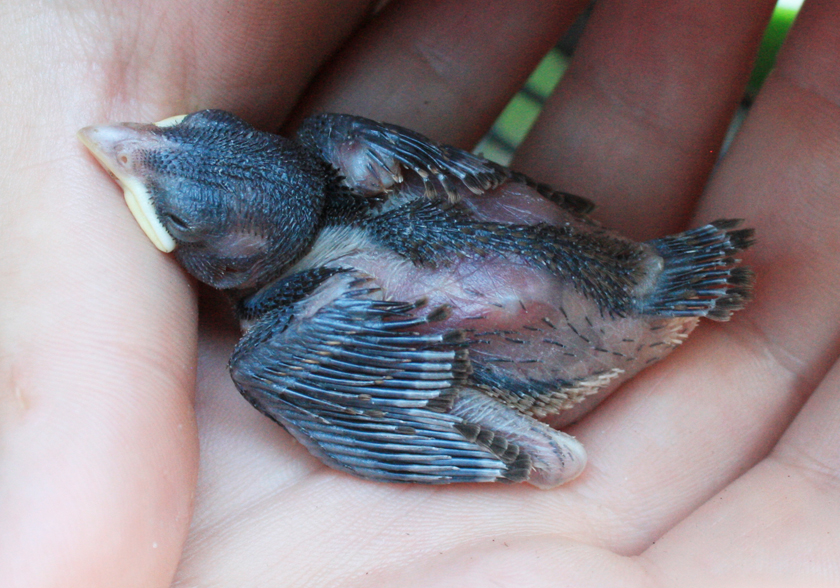 Just keep an ample amount of food supply in your yard, grow trees and bushes to provide an ideal nesting site for the bird, and make sure your yard is safe and secure for the birds.
Just keep an ample amount of food supply in your yard, grow trees and bushes to provide an ideal nesting site for the bird, and make sure your yard is safe and secure for the birds.
Feed Them
Robins like to consume invertebrates and insects in the summer and fruits and seeds in the winters. Make your yard similar to the wild habitat that they live in. Plant trees in your garden to encourage invertebrates in your garden. This way, you can provide food naturally to these birds.
Provide Nesting Opportunities
Birds like robins are always looking for a safe space to stay in. Their main aim is to find a hidden spot to nest, away from the predators.
The ideal nesting spots for a robin are dense vegetation, climbing plants, and hedges. Moreover, you can hang up nest boxes for these little creatures. They prefer small nest boxes with an open front and under natural covers.
Safety From Predators
Robins are likely to settle in your yard if they feel safe from large predators such as dogs or cats.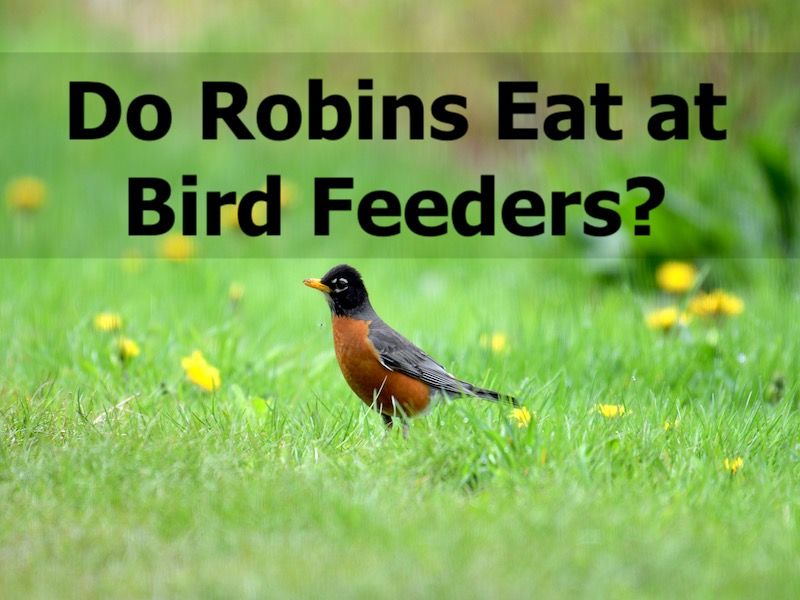 The bird feeders should be near dense vegetations to hide easily if they sense danger.
The bird feeders should be near dense vegetations to hide easily if they sense danger.
The nest boxes should not be directly in contact with the sun and wild winds. Clean the feeders and nest boxes regularly to avoid bacteria formation that could harm the birds.
How To Take Care of a Baby Robin?
Steps to take care of the adorable little robin babies.
If you see a baby robin stranded on the ground, you should take action to care for it. If the bird is injured and its parents are nowhere to be seen, it is advisable to keep it warm, feed it, and wait for it to get better before you set it free.
PRO-TIP
Baby robins require extra heat at night. If you do not have a brooder, you can keep a heating pad under the box to provide warmth.
Watch The Baby
If you come across a baby robin on the ground, it is possible that the fledgling was learning how to fly but fell over. Stay at a safe distance and keep a watch over the baby bird to see if its parents fly by to take it. If the parents do not return in approximately 30 minutes, go near the bird and check for any signs of injury.
If the parents do not return in approximately 30 minutes, go near the bird and check for any signs of injury.
INTERESTING FACT
When the baby bird falls, it will likely chirp loudly to call its parents. This is why you should wait for a good time before acting; the parents might return to the nest and look for their baby nearby.
Place The Baby in a Warm Place
If you are sure that the parents of the baby robin are not to return, place the baby in a box covered with a soft, warm towel. Don’t forget to punch holes for the air to pass.
Cover the lid as the babies feel safe and calm in darkness; they may stop fluttering around in the covered box.
Make sure that the baby bird is warm and cozy. Remember that you should not keep the box directly under the sun or in front of a heater; it can lead to dehydration or overheating.
PRO-TIP
Place a hot water bottle under the towel that is placed in the box. This will help keep the baby robin warm.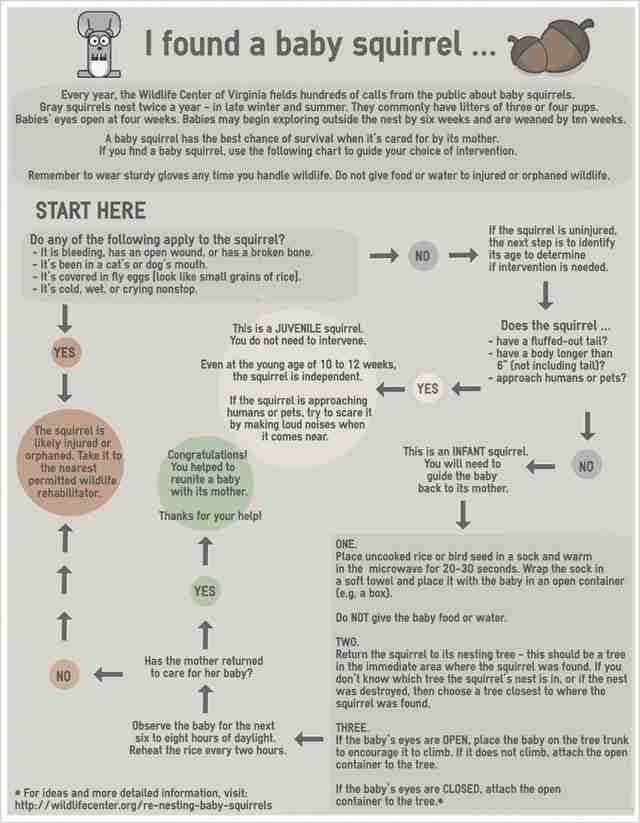
Feed The Baby
Feed the baby bird after every hour if it is a fledgling. If the baby robin is featherless, then feed it after every 30 minutes. Food that can be fed are:
- Worms
- Canned dog food
- Canned cat food
Be sure to mash the worms before feeding them to the birds. Young babies cannot digest whole worms properly. However, you can use tweezers or toothpicks to put the food directly into the baby’s mouth.
Follow each bite with a drop of water. You can place the water drops on your fingertips and put them close to the bird’s beak. Baby birds do not need a lot of water; their food is enough to keep them hydrated.
WARNING!
Do not hold the bird while feeding it, and do not pour the water directly into the baby bird’s mouth; it can fill its lungs with fluid and cause pneumonia.
Keep Reading!
Baby robins are adorable little creatures that you can easily attract to your yard. The parents are in charge of keeping the babies safe and secure.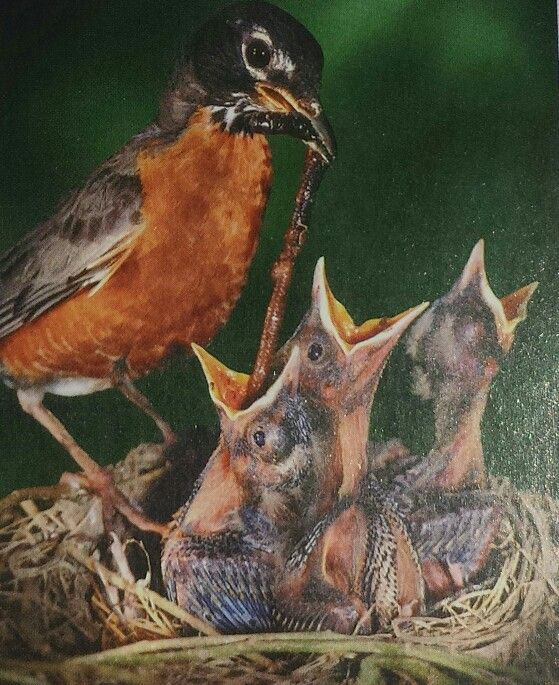 However, if you spot a baby robin on the ground without any sight of its parents, it is your responsibility to take care of it.
However, if you spot a baby robin on the ground without any sight of its parents, it is your responsibility to take care of it.
This post will help you identify food sources given to a baby robin and those that should be avoided. In addition, tips on how to take care of an orphan baby bird are also mentioned to guide you through a similar situation.
If you want to know more about baby birds, such as the baby bluebird, you can read up on this post .
What Do Baby Bluebirds Eat? How to Take Care of Baby Bluebirds
Bluebirds are exotic little creatures that require care and attention. To know exciting facts about baby bluebirds, read below.
By David A. Swanson
Bird Watching USA
My name is David and I'm the the founder of Bird Watching USA! I started Bird Watching with My father-in-law many years ago, and I've become an addict to watching these beautiful creatures. I've learnt so much over about bird watching over the years that I want to share with the world everything I know about them!
Posted in:
Bullfinch menu and taste preferences nutrition
Pink robin: Beautiful pink-breasted bird (8 photos + video)
This bird has so many names. It is called a robin, a robin, a dawn, an alder. If we turn to scientific systematics, then the robin is a bird from the flycatcher family of the genus Thrush. According to all biological characteristics, it is close to the nightingales, however, the landing of the body is somewhat different - in the nightingales the body is placed mainly vertically, and in the robin it is somewhat horizontal.
It is called a robin, a robin, a dawn, an alder. If we turn to scientific systematics, then the robin is a bird from the flycatcher family of the genus Thrush. According to all biological characteristics, it is close to the nightingales, however, the landing of the body is somewhat different - in the nightingales the body is placed mainly vertically, and in the robin it is somewhat horizontal.
The robin differs from the nightingale in color. This orange-breasted bird, next to the most songbird of Russia, seems very bright and noticeable. Only the Far Eastern nightingale bluethroat, whose chest is decorated with a large bright blue shirt-front, can compete with the robin in bright plumage.
From above, the Robin is olive-brown, its forehead, cheeks and goiter are bright red, the abdomen is light, almost white, and the chest has a characteristic light crimson color.
Despite the fact that all robins have a bright spot on the chest, they still have sexual dimorphism.
Like most birds, the male has a brighter plumage than the female. Above it is the same gray, but the shirt-front is painted in brighter colors, which spread along the entire side of the head, reaching almost to the neck.
Young birds are mottled, their backs are brown with reddish spots. The wings, throat, chest and sides are painted in reddish-ocher tones. The belly and back of the tail are whitish.
Like most birds, the male has brighter plumage than the female. From above it is also gray, but the shirt-front is colored in brighter colors
Thus, the red-breasted coloration is typical only for adults. The young that have recently left the nest are not so bright and noticeable.
Interesting facts
Where does the name of the bird come from?
Many people wonder why the bird was called the robin? But it's easy to guess! The robin is a bird whose singing can be heard at dawn. But her boisterous chirping can be heard in the evenings as well.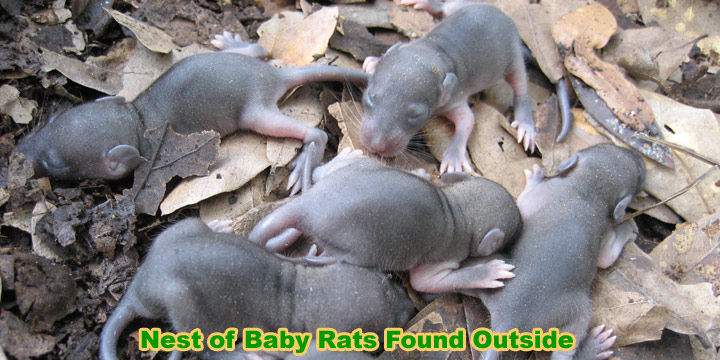
What is the correct name?
Robin or golden robin - the spelling of the name of the bird has the same root origin with the word "dawn". However, in the common people, this period of the day is affectionately called "dawn". Surely, both options take place, if not in literary writing, then in the colloquial genre for sure.
Feather color as information
Why are birds so bright? For whom did the robin paint its breast so brightly? After all, this is how she unmasks the seed. Any predator, even with poor eyesight, will see a red speck jumping in the bushes. And here, not only males, but also females have a bright spot.
In birds, sight is the main sense organ from which they receive information.
Of all the many visual signals, birds, first of all, need to recognize the enemy, food, chicks and individuals of their own species, especially if it is a representative of the opposite sex.
Each individual has identification marks, according to which it can be classified as “our own”. This is essential for any kind of communication. A bright spot on a robin serves as an identification mark of belonging to:
- this type;
- specific sex;
- maturity stages.
Differences in the brightness and configuration of crimson spots provide the individual with information that there is a rival or partner in procreation in front of her. Since these birds are insectivorous, their coloration cannot carry the function of recognizing a potential prey. But red-breasted birds for chicks are a sign that their own bird has flown to them, which can feed them. It is at this moment that you need to scream and open your beak wide.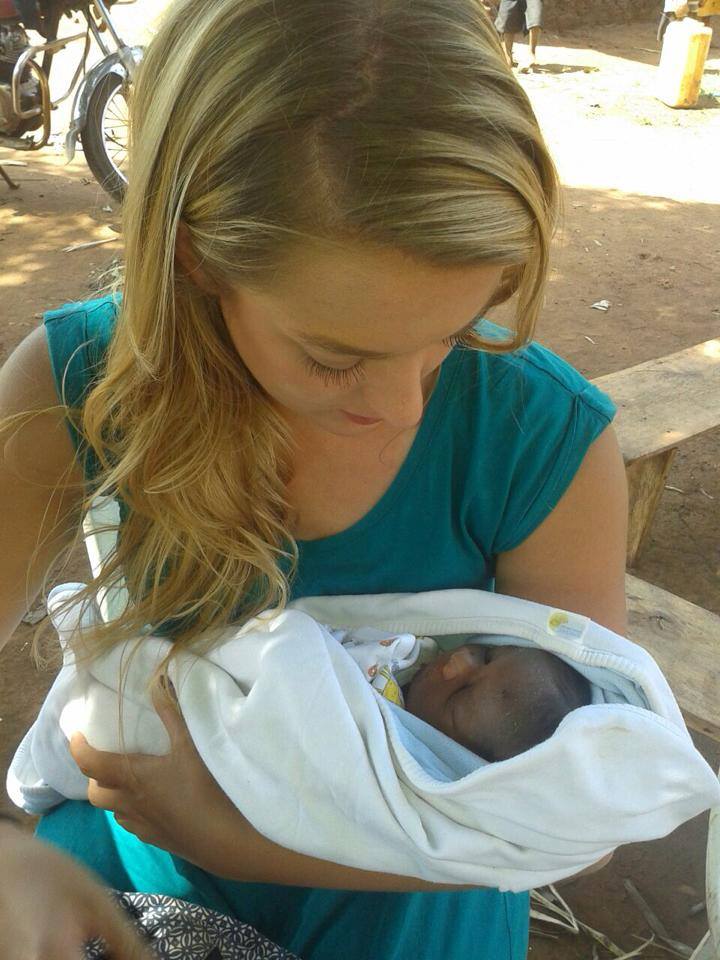 If something flew up without a bright spot, then you need to silently freeze, merging with the nest.
If something flew up without a bright spot, then you need to silently freeze, merging with the nest.
Thus, the Red Book of Russia includes a huge number of species of birds. Some of them live in small populations and can be observed in different parts of the country, and some birds are little studied. Unfortunately, a certain number of species are on the verge of extinction and it is almost impossible to save them on the planet. There are many reasons for the disappearance of birds. This includes pollution of water areas, and the destruction of wild zones, and poaching. At the moment, the maximum number of bird species is under state protection, but this is not enough to preserve and restore the populations of many rare species of birds.
Nesting behavior
The robin's nest is built on the ground, in natural depressions, as well as in low bushes. The building materials are leaves, fluff and blades of grass. Eggs are also painted under the color of dry grass. They are slightly pink, sometimes yellow, almost white, with red spots.
Bright coloring for a small bird carries some risk of unmasking, but allows you to quickly get the right information by recognizing your partner
Robins are migratory birds. Despite their small stature and adherence to a diet of insects, they arrive early and depart late. After wintering, they appear in our area in March, when there is still snow and sub-zero temperatures.
Males arrive first. Their task is to defend the territory from the penetration of other males of this species, to protect the old nest or build a new one. The females arrive later, when the males have already settled their nests and territories. At this time begins the years of the first insects. So by May it is already possible to lay eggs.
At this time begins the years of the first insects. So by May it is already possible to lay eggs.
Usually there are 5-8 eggs in one clutch. The incubation time lasts about 2 weeks. Chicks are born weak, naked, almost black. In the first few days, one of the parents constantly warms them with his body.
Chicks stay in the parental nest for no more than a crescent. After that, they leave the nest. Such an early departure is due to the fact that, under favorable conditions, the robins have time to lay their eggs again.
When the chicks leave the nest, they are not yet able to fly. For this reason, they are colored somewhat differently than their parents. They need to blend into the environment until they can fly well, which is why they are painted in the colors of dry leaves and dark grass.
All robins have very good parental instincts. Not only do they have time to raise 2 generations of chicks during the summer, they often undertake to feed orphaned robins.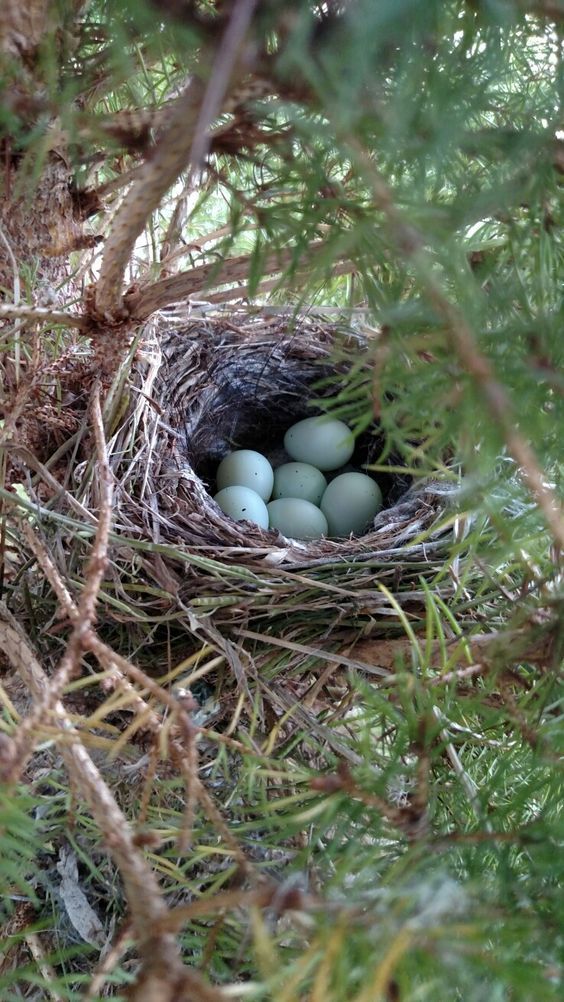 Cuckoos use this. They toss their giant egg into the nest of small birds. Robins, in their desire to feed all the suffering, do not notice the insidious substitution.
Cuckoos use this. They toss their giant egg into the nest of small birds. Robins, in their desire to feed all the suffering, do not notice the insidious substitution.
Reed or reed bunting
One thing that is really easy to confuse with sparrow is reed bunting. It is the same size, and the plumage is painted in brown-gray tones with black and white markings.
Only the male reed bunting differs from the sparrow. After all, his head and throat are painted black.
Oatmeal lives where it is damp: on ponds and swamps, near rivers, lakes. Moreover, he chooses reed, willow and reed thickets. So in other places, sparrows are most likely to be found.
In addition, the bunting is a migratory bird, so in winter it is not necessary to distinguish it from a sparrow.
Habitats and food preferences
This bird prefers to live in the forest. However, she does not like the dense taiga, but mixed forests with dense undergrowth, glades, edges and forest windows. The robin especially loves thickets near water bodies - in floodplains of rivers, on the banks of lakes.
The robin especially loves thickets near water bodies - in floodplains of rivers, on the banks of lakes.
The robin can live next to a person, if he does not interfere with her and creates thickets with trees of different heights, with shrubs and grass. True, a person is accompanied by cats, which turn into the main enemies of these birds.
Despite the fact that the robin is considered an insectivorous bird, in spring and autumn, when animal food is in short supply, it feeds on seeds and berries. At the height of summer, when chicks squeak in the nest, red-breasted dad and mom tirelessly hunt for caterpillars, spiders, worms and other protein foods.
In nature, the main enemies of robins, except for humans and cats, are representatives of the mustelid family (sable, weasel, mink, marten, ferret). Badgers, foxes, wolves and, of course, domestic dogs love to destroy the nests of robins. From the bird world, all small birds of prey are interested in adult robins and their chicks, including shrikes, which steal chicks from nests, eat them or store them, attaching them to twigs or thorns.
The whole life of the robin, like every earthly creature, is devoted to the fulfillment of 2 functions: to be someone's food base and to limit the number of someone who is its food base. However, she has one more function - to please a person with her voice and bright outfit.
Bullfinch menu and taste preferences (nutrition)
Feathered beauties and beauties are vegetarians. Extremely rarely, mostly by force, they can eat insects, but in general their diet is plant food. In the course are tree seeds, nuts, small fruits. By the way, here is a strong beak with its unusual shape. With the advent of spring, they feast on buds, young shoots of plants. In summer, they do not disdain flowers, they adore bird cherry and mountain ash.
Oh, mountain ash - this is the weakness of the red-breasted creatures, their special love. A pastoral picture from a postcard - bullfinches sit on rowan branches against the background of large scarlet clusters and create a breathtaking contrast between their bright plumage, juicy berries and the dazzling white snowy edge of the tree.
Everything in life happens exactly like this. A flock of birds lands on a mountain ash, but the inborn habits of a gentleman will not allow the male to feast on berries before his girlfriends. First, the ladies will taste delicious seeds from the juiciest bunches, and only then the men will start the meal. A few minutes of an enthusiastic feast, and a flock will throw up a snowball from the branches and fly away.
Source
Robin bird. Description, features, lifestyle and habitat of the Robin
Robin or robin - as it is customary to call it in Russia, is known for its friendly character and variegated color. This little bird is not at all afraid of people, while males can be very hostile to each other. The lifestyle and habits of the robin cannot be called ordinary - they differ markedly from the usual city birds.
Description and features
Robin is a breed from the flycatcher family, belongs to the passerine order. Often there are questions about the correct name birds - "zoryanka" or "robin". The last variant, which comes from the word "dawn", is correct - the distinguishing feature of the pichuga is its orange color.
The last variant, which comes from the word "dawn", is correct - the distinguishing feature of the pichuga is its orange color.
The length of an adult individual reaches 14 cm, weight does not exceed 16-22 g. The wingspan is in the range from 20 to 22 cm, the legs are long. This allows her to move by jumping, which from afar can be mistaken for a wagtail. Males are somewhat larger than females, feathers have a loose structure - it gives the impression of a bird's roundness.
Robin is easy to spot even among the dense foliage of trees. Juveniles have a white-brown plumage, with occasional orange spots. The color of an adult bird is variegated:
- The upper part from the head to the end of the tail has a brown-green color;
- Belly white, breast rim the same color;
- Forehead, flanks, throat and chest red.
The color is the same in both sexes, in females it has a lower intensity. Elderly individuals can be distinguished by their bright coloration. The beak is black, the limbs are brown. 9 eyes0009 robins large, black.
The beak is black, the limbs are brown. 9 eyes0009 robins large, black.
Attitude towards people and singing of the robin
Singing is a distinctive feature of these birds. Morning "concerts" are sung by males, following the black redstart, simultaneously with the blackbird. They can continue to chirp even late in the evening - they can be heard in parks at dusk. In males, the "set of notes" is more diverse than in females - especially during the breeding season. Their song is considered one of the most beautiful; in winter, robins of both sexes sing.
Listen to the voice of the robin
The musical bird has a good relationship with humans – it can even feed from hands. Often these pichugs stop in places where the earth is dug up - in loose soil, they can find treats in the form of worms and beetles. In winter, they can even fly into people's homes in search of warmth. They can bask near non-natural light sources, providing an opportunity to admire their unusual plumage.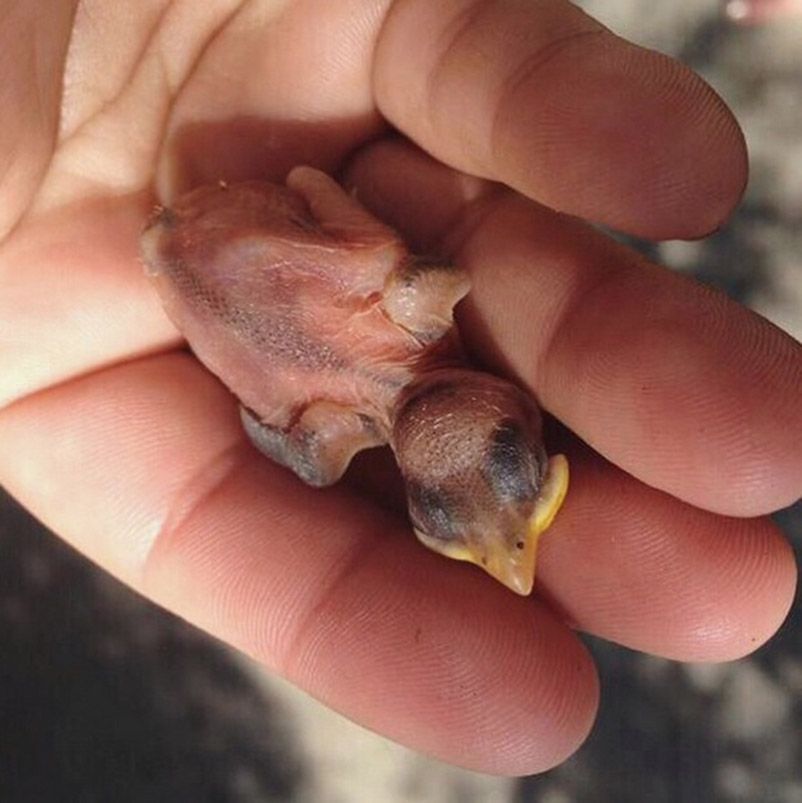
Origin
In spring, birds with red breasts arrived
The world of birds is diverse and amazing! You never know who might visit the feeder. We present to your attention photos of all types of birds that were photographed on Art-feeders of our production.
Great Tit
The most common visitor to feeders. They are dexterous acrobats, which allows them to forage from any feeder. These birds are with us all year round, lead a sedentary lifestyle. In summer they eat insects, and in winter they supplement their diet and switch to seeds rich in vegetable fat. Most of all they love sunflower seeds!
Lazorevka
As a rule, this species moves to the city in winter. In summer they prefer the countryside. They live in large flocks. Sparrows are noisy and arrogant birds, from the point of view of a person, occupy the feeder, preventing other birds from feeding quietly. With all the shortcomings, sparrows bring invaluable benefits: during the breeding of chicks, they completely switch to live food, catching insects and other invertebrates.
House Sparrow
Buy this feeder
City bird, ornithologists call it synanthropic. They will never turn down a free meal. Like tree sparrows, brownies feed their chicks with insects. The presence of sparrows in the city is an indicator of environmental stability. In Europe, and more precisely in England, sparrows are listed in the Red Book, they have almost disappeared from the streets of London and other large cities. Think about this when you chase the sparrows away.
Greenfinch
Buy this feeder
The conspicuous red-breasted bird is a male. Females are inconspicuous, gray-beige, more like sparrows. Some owners of feeders can observe bullfinches feeding at home, they do not fly to others. Here, as luck would have it.
Chaffinch
Beautiful large bird with a huge beak. Feeding troughs are visited, but not very often. They feed on grains and seeds. They love to feed on fruit trees, bird cherry.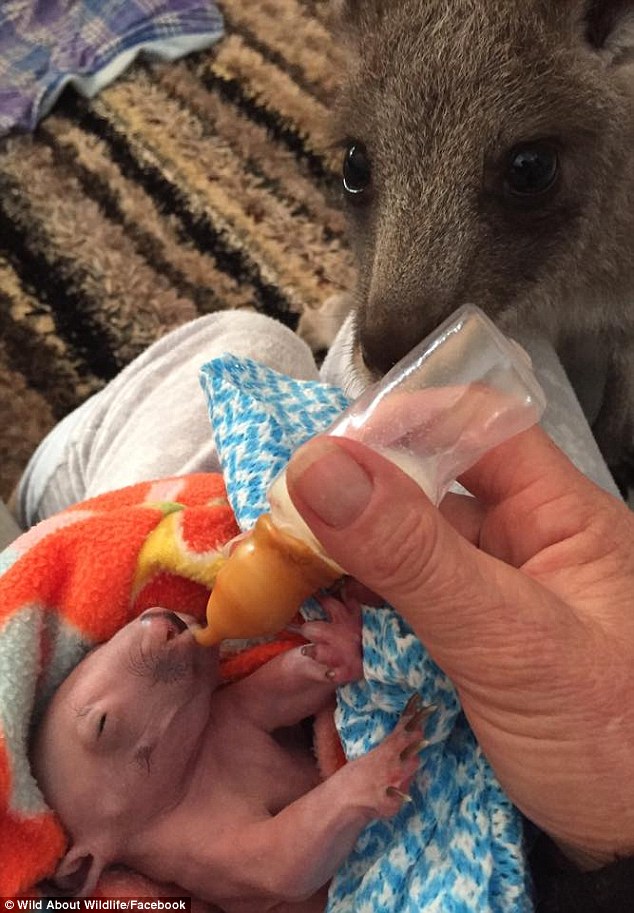 Recently, there have been more and more of them, so there is a chance to see him in your feeder.
Recently, there have been more and more of them, so there is a chance to see him in your feeder.
Yurok
Lover of hazelnuts and peanuts. Woodpeckers often visit feeders. They even fly to windows. The bird is big and beautiful, its arrival at the feeder is always an event!
Middle Spotted Woodpecker
Buy this feeder
The bird is rare, but sometimes even appears on feeders. Few individuals stay over the winter, most fly away.
Robin
A large bird with characteristic blue wing mirrors. It is the main distributor of oak, as it loves acorns very much. At the feeders, jays love to feast on peanuts and bread.
K dove
This season we had a real set of birds. If we count all those whom we observed not only at the feeder, but also in the vicinity, then 19 species come out. Doukened guests:
Big tits
Lazorevka
Hochlatka
Mount
Moskovka
Rivovnik
Large variegated woodpecker
Soroka
Gray rings
Raven
County
Pilic
Bed
Podzlizen
Poluzen
0005
Source
Spring birds - which are the first to arrive in spring
First of all, it should be noted that for most birds, males are the first to return to their homeland.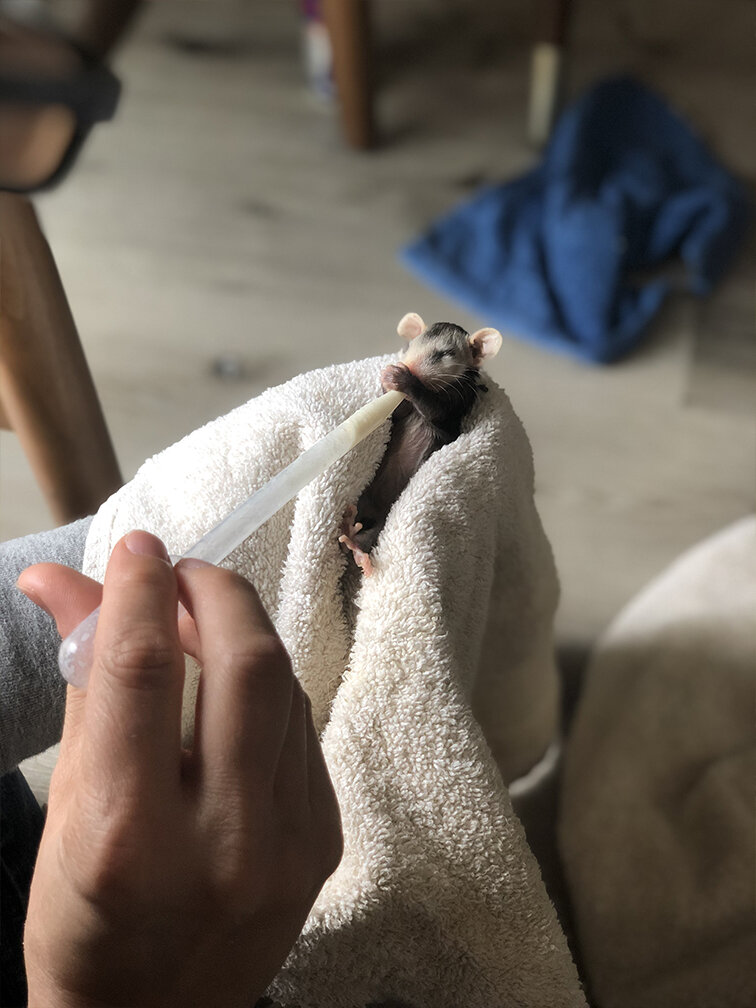 This is due to objective reasons - it is necessary to build or restore nests, to protect them from the claims of other applicants. And that's what the males do. Breeding - the task of females - becomes more relevant later, and in the presence of appropriate conditions.
This is due to objective reasons - it is necessary to build or restore nests, to protect them from the claims of other applicants. And that's what the males do. Breeding - the task of females - becomes more relevant later, and in the presence of appropriate conditions.
In what order do birds go home
All migratory birds return to their homeland according to a specific calendar. Each family follows it from year to year, up to the day, and strictly flies to the place where the wintering journey began.
Birds have a sequence chart of arrivals, according to which you can find out which birds arrive first in the spring. Let's consider in more detail.
Wagtails return home as soon as the snow begins to melt. In different regions, this period begins from the end of February to March. Sometimes these birds can be seen floating on drifting ice.
Second in line, but no less early, rooks. They arrive at their native places at about the same time as wagtails.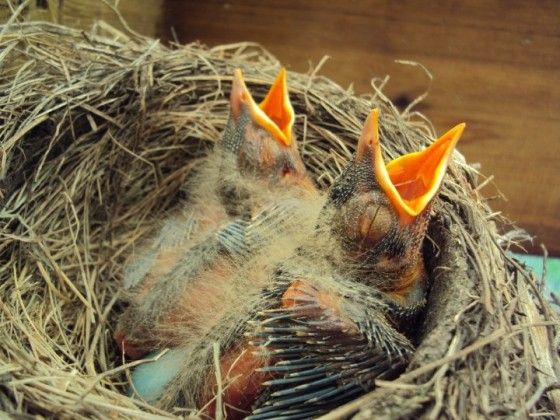
5. Swallow
Swallows are among the top five aspiring to their homeland. They also need extra time because building a nest for them is a real engineering adventure that takes time. After all, you have to build from clay, and it is much more convenient to find it at a time when the earth is not yet completely covered with greenery.
What is the order of arrival of birds in spring?
Oddly enough, birds always follow a certain flight schedule. And each of them arrives at the allotted time. In addition, feathered friends return to the place that they left in the fall. Usually, they occupy old nests. If the dwelling was destroyed, zealous newcomers equip it again and prepare to breed. Now it is important to find out which birds come to us first in spring.
Wagtails are considered to be the earliest birds, as they delight with their cooing already at the beginning of the ice breaking. They can be observed when they float on melted ice floes on the river.
Rooks were noticed by no less early birds. They also fly into their possessions as soon as the snow melts in the fields. Rooks tend to ennoble previously abandoned nests, after which they are engaged in laying and incubating eggs. Rooks are among the first to breed chicks.
The next aliens are seen to see starlings and larks. Starlings occupy the nests already built for them and also rush to produce offspring. And the larks sing sonorous songs that mean the arrival of spring. At starlings, males arrive first and equip the nest, and females join later.
A little later you can also meet handsome chaffinch . It can be seen by its peculiar coloration: the head is blue; the forehead is black; on the cheeks, throat and chest brown-reddish color; the back has a reddish-brown edging; tail green; the wings are yellow at the edges, black-gray inside.
It is impossible not to admire such a peculiar bird as the thrush, which flies after the chaffinch. In size, it resembles a dove. But, its color is much more attractive. It has a yellowish-white chest and brown spots on the belly. The color of the back is grey.
In size, it resembles a dove. But, its color is much more attractive. It has a yellowish-white chest and brown spots on the belly. The color of the back is grey.
In April redstarts return from the warm regions. This bird is slightly smaller than a sparrow and has a bluish-gray color. The eyes are outlined with a black stripe, a white spot on the forehead. The neck is painted black. The tail is red-orange in color.
Another feathered friend that flies after the redstart is bluethroat. This bird is small. Its distinguishing feature is a bright blue spot on the breast , which separates from the belly into a black half-ring. The back and wings are brown in color, and the tail is striped red.
The month of May welcomes the nightingale into forest embraces. This bird pleases others with its unusual singing. There were legends about the trills of the nightingale. No one can resist his singing, even though in appearance the nightingale is completely inconspicuous, has a gray color.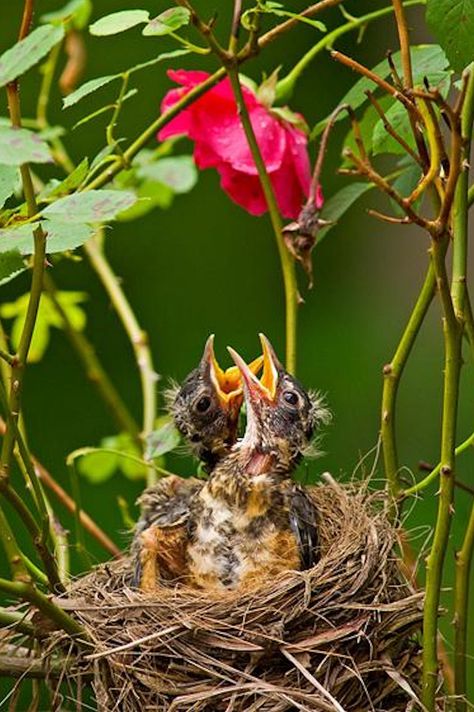
The end of spring is marked by the arrival of swallows . These beauties usually nest near human dwellings. Swallows often build nests under balconies, in hallways, in gorges above the river. These birds are black with a white breast. Usually swallows choose a place for a nest once and build it themselves. Every year they come to the old nests.
All about the arrival calendar of feathered relatives
People have already noticed a certain peculiarity of birds' flight from warm lands in spring to their native places. And over the years, this order has not changed. Therefore, even the approximate dates of their return to their native land were noticed. So, calendar of birds migration from warm countries looks something like this:
- Return of rooks from March 18 to 20.
- Return of the starlings falls from March 25 to April 6.
- The meeting of larks, swans, thrushes and finches falls on the dates from 1 to 10 April.

- Mass return of such birds as geese, ducks, gulls, cranes occurs from 11 to 20 April.
- At the end of April, you can welcome redstarts, warblers, forest pipits.
- Swallows and flycatchers meet in the first half of May.
- Nightingales and swifts return in the middle of May.
- Orioles arrive at the end of May.
Each bird has not only its own arrival schedule, but also a specific flight route . Each family travels along its own path. The calendar shows which birds arrive first in the spring.
4. Goose
Another of the earliest birds to arrive. Moreover, the bird is a commercial one, because at a time when fresh greens could not yet feed a person, this waterfowl mountain of meat and fat became a real salvation for our ancestors. Today, geese and other commercial waterfowl are partly protected by law until their chicks fledge.
Birds arriving in May
By the end of April, a forest full of leaves meets a nightingale in its arms. He pleases those around him with his beautiful singing. Although the bird is completely inconspicuous from the side, not distinguished by a special color, its songs cannot be confused with anything.
He pleases those around him with his beautiful singing. Although the bird is completely inconspicuous from the side, not distinguished by a special color, its songs cannot be confused with anything.
The very end of May is marked by the arrival of swallows. These are heat-loving creatures, arriving when the weather is dry and hot. They like to equip their houses near people. Often, balconies, rooftops and gorges above rivers become nesting sites. As a rule, swallows build a nest once, and return to it every spring.
3. Starling
Almost the only bird that turned out to be so motivating for a person that he began to make artificial houses for her. Moreover, these houses even in several languages received a name derived from the name of a bird. Birdhouses - these structures are still being actively made today, and even compete in competitions for the most original birdhouse. By the way, such competitions are held both in the yard format and in the format of the festival. The upcoming weekend can just boast of the birdhouse festival in Minsk.
The upcoming weekend can just boast of the birdhouse festival in Minsk.
Signs about birds returning in spring
Since ancient times, there has been a sign: as soon as the birds return home, be sure to wait for warm days.
There are other signs that are passed down from generation to generation:
- if a bird builds a nest high on a tree, the summer will be cold;
- a large flock of migratory birds - a good friendly spring;
- saw fluffy birds - wait for a change in the weather;
- rooks fly around their houses - expect trouble;
- a starling has arrived – spring has come;
- a swallow built a nest near the house - to well-being and happiness in the family;
- if a swallow flies close to the ground, then it will rain;
- the lark returned quite early - spring and summer will be hot.
2. Rook
We are used to considering rooks as the leaders of this spring rating, but in reality these piercing black birds are only in second position. The only thing in which rooks are undoubtedly the first is in hatching offspring. Rooks have very little time to make a nest, because females of this species arrive almost immediately, and the laying of eggs and incubation of masonry are already beginning.
The only thing in which rooks are undoubtedly the first is in hatching offspring. Rooks have very little time to make a nest, because females of this species arrive almost immediately, and the laying of eggs and incubation of masonry are already beginning.
By the way, rooks, unlike many migratory birds, do not "bother" too much with the construction, because the nest is a one-time thing. For the next year, most rooks even consider their own last year's nest only as a source of building materials.
There was even a legend about such an early breeding of chicks by rooks, according to which the rook argued with the ants about something, and offered his children as a pawn. And when he lost, he was forced to either give away his offspring, which he really did not want to do, or hatch the chicks first, when the ants were still sleeping. By the way, there are still grounds for this legend, because the nests of rooks, which for some reason breed later, are really just teeming with ants.
What birds do when they arrive in their native lands
Birds that have returned to us after winter delight everyone with their loud singing. They are young, full of energy and strength, which is why they immediately take up the arrangement of their homes. So, rooks first of all begin to actively restore their nests. Change downy litter, rotten and broken branches, add new dry grass.
Generally, males arrive first, regardless of species. They are engaged in the arrangement of the old house, if it is not left in the winter, they are building a new one. By singing and screaming, they attract females, after which they lay eggs and begin to feed new young offspring.
1. Wagtails
Oddly enough, according to ornithologists, the leaders are ... wagtails. They appear at home even during the icebreaker. And since there is very little food during this period, they often appear in cities, although usually the bird is rather shy. Male wagtails begin by looking for a place to build a nest and selecting building materials.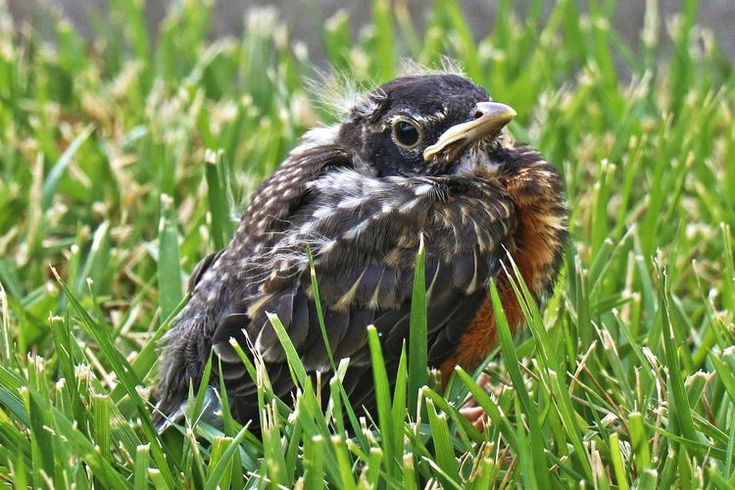 Females subsequently choose not so much the male as his nest, safe and comfortable, so the householders try their best.
Females subsequently choose not so much the male as his nest, safe and comfortable, so the householders try their best.
Birds arriving in spring always delight even the most depressed people with their chirping. And all because the winter silence of nature, along with a lack of sunlight (and vitamin D), are colossal risk factors for psychological disorders, and in the first place - depression.
Spring, in its turn, is an opportunity to take a break from the daily hustle and, remembering the advice of the Train from Romashkovo (see the cartoon of the same name), give yourself time to enjoy nature so as not to be late for the whole spring.
Which of the birds flies away in spring
Yes, you are not mistaken, they do fly away. If you figure it out for sure, then the birds that fly to us in the spring do not fly, but fly past us. Depending on the region, birds rise higher and higher to the north, to temperate latitudes, every week. From this we can conclude that, for example, the nightingale, which migrates to North Africa in the fall, flies away in the spring to return to its native lands.
Often by the spring you can see how bullfinches leave their winter places. This is due to the fact that the breeding season begins in the spring, and they have to look for new nesting sites.
If you liked the article, share it with your friends on social networks, comment and like.
Source
What do birds eat? - Feeding Chicks - Animal Expert Site - HowMeow
Unfortunately, it's common to see chicks hatching on the ground, especially during the feeding season. Whether they are orphaned, rejected, or simply dropped by bad weather, many do not survive. If we run into them long enough, they might have a chance. While finding a warm and safe place to protect yourself is vital, so is knowing what do little birds eat?
HowMeow.ru analyzes to feed the little bird if you find it abandoned or orphaned. While it is possible to care for orphans, we recommend taking them to a wildlife recovery center. They will have the experience and resources to give girls the best chance at life. Until I can get there, this article can help increase those possibilities.
Until I can get there, this article can help increase those possibilities.
What do newborn birds eat?
If we find a motherless chick or chicks in our environment, it is very important that we have the correct information. Due to their delicate nature, we must be very careful when selecting them. Birds are non-mammals, which are usually more developed at birth (although this will vary by species). Many are born blind and without feathers. They are very small and0009 vulnerable . They do not feed on milk like mammalian species, but that does not mean that they can eat alone.
Most birds depend on one or both parents to survive. These parents provide food, they often take turns leaving the nest and looking for food. The food required by the birds will depend on bird species . Some have diets based on insects, other seeds and fruits, and other even larger animals such as other types of birds.
To feed their baby birds partially digested food and then regurgitate it so that its young can eat directly from the mouth. In general, chicks immediately recognize that they need food and instinctively recognize their parents. This means that when the parents return with food, they are known to open their beaks fully. The parents can then put food down the throat, necessary for the young people to eat.
In general, chicks immediately recognize that they need food and instinctively recognize their parents. This means that when the parents return with food, they are known to open their beaks fully. The parents can then put food down the throat, necessary for the young people to eat.
When we find a newborn bird, featherless or with early plumage , the first thing we have to do is identify the species. Whether you're trying to feed a robin, a mocking bird, or a blue jay, identifying the species will mean we can know what kind of food the animal needs to survive. For example, sparrows do not have the same diet as blackbirds.
The shape of a bird's beak can help us understand its diet. If the beak of the chick is thin, elongated and straight, it may be insectivorous. Shorter and more tapered peaks mean the bird will be a granivor (seed-based diet). In any case, you can find the correct small bird rescue food in certain areas. However, most of us will have to rely on the home version.:max_bytes(150000):strip_icc()/robin-feeding-babies-5a1d6f59beba33003700d88b.jpg) One option would be cat food dipped in water with a boiled egg and breadcrumbs. Then it should be mixed in a paste as a consistency.
One option would be cat food dipped in water with a boiled egg and breadcrumbs. Then it should be mixed in a paste as a consistency.
Food is not the only important aspect of the nutrition of young birds. Real food, that is, the way it is presented, is vital. We need the bird to open its mouth when it sees us. If they can't do that, they won't survive .
How to Feed a Little Bird
At the beginning of their life, these little birds will need us to feed them directly into their mouths. If we have any questions or want to confirm the type of view, we should ask for help to form a local wildlife rescue service or bird rehabilitation center (if available). Biologists, ornithologists, or even veterinary clinics can provide some useful practical advice. With proper care, these chicks can grow up and start eating on their own within a few days...
Birds go through different stages of development. Being a newborn and learning to fly, the bird will become inexperienced youngster . Newbies will have feathers, but they will not be fully developed and will not necessarily have the same plumage as when they are mature. These birds will be able to access food better than newborns, but you will still need to know the types of recruits to know what to feed them…
Newbies will have feathers, but they will not be fully developed and will not necessarily have the same plumage as when they are mature. These birds will be able to access food better than newborns, but you will still need to know the types of recruits to know what to feed them…
It is very important to know the difference between an orphaned or abandoned bird and a bird that is just nesting. As we mentioned earlier, the parents of the offspring will have to look for food. The same will happen to many newcomers. This may take some time. If the birds in are clearly suffering from or on the verge of death, then they may need intervention. Otherwise, you must watch them and see if their parents return.
If we see that the bird has fallen but is alive, we must look for a nest with other chicks. We can bring them home and let their parents take care of them. If we need to pick them up and take care of them, but they are not eating, contact a specialist Animal Welfare Center .
How much does a bird eat?
Once we identify the types of birds and what they eat, we need to know how we can open our mouths to feed them. Some birds will sense our presence and open their beaks automatically. Some claim that you can whistle and they will open, but this does not happen to all birds and it may not be the whistling by itself it does the job. Only the presence of the other can be enough.
If birds don't open their beaks, we should try to open them ourselves. We can stimulate the chick's beak to feed by applying slight pressure to the corner of its mouth. This should force the bird to open its beak and allow it to inject a small amount of pasta with the tweezers or the syringe (not the one with the needle). We must try to put food deep into his mouth, which must be done with great delicacy. Birds should try to get food on their own.
Gradually the newborn bird must gain our trust and start opening its beak as we approach first we will often have to offer them food.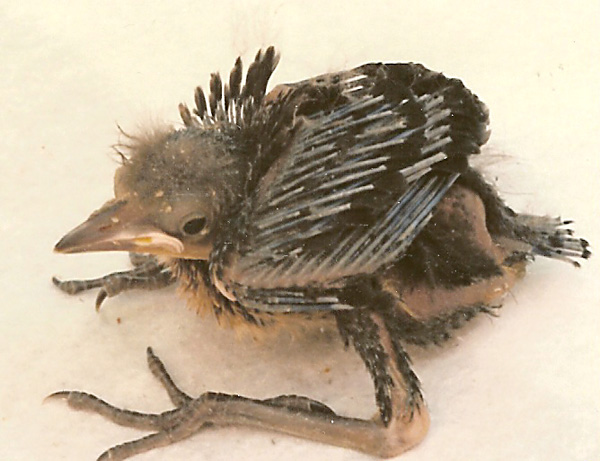 Once they are satisfied, we will need to place the channels. The bird will eat during the day, not at night. When the birds are full, they themselves will tell us. After a few drinks, they will stop opening their mouths and close their eyes. This means they are full.
Once they are satisfied, we will need to place the channels. The bird will eat during the day, not at night. When the birds are full, they themselves will tell us. After a few drinks, they will stop opening their mouths and close their eyes. This means they are full.
As soon as they learn to eat for themselves, the birds will need feeder . They will peck at this throughout the day and self-regulate their food intake. You should also provide a container with plenty of clean fresh water...
If the bird was injured then you will also need to find a way to deal with the problem. Our article on the healing of a bird leg fracture may be helpful.
What to feed adult birds?
Not all birds will feed when we find newborn birds. People can help supplement the natural diet of our local bird population. This gives them the resources to survive and we are happy to have more beautiful fauna in our garden or balcony .

